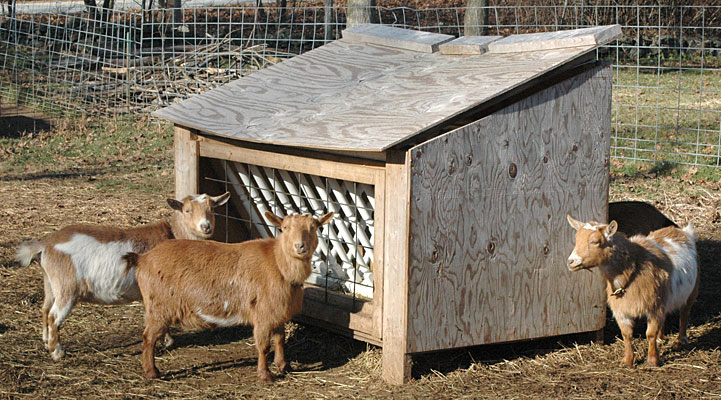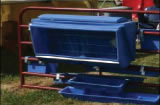

Stall hay feeder full#
Shipments that are less than a full semi-truckload and are going to a residence (a non-commercial business without a loading dock or forklift) require a lift gate which is built into the cost of shipping. Custom and special orders have longer lead times which will be communicated at the time of the order. If your horse does experience any dental issues with a hay net or slow feeder, please consult your veterinarian immediately.Cashmans ships in-stock items within 1-2 business days. Slow feeding can actually help manage dental risks caused by underlying conditions, such as laminitis or high-sugar diets. However, that is not to say that metal feeders or grates are necessarily detrimental to your horse's dental health. Q: Are hay nets bad for your horse's teeth?Ī: Hay nets are not bad for your horse's teeth as long as they are high-quality nylon or polyester and are not constructed from steel, wire, or metal parts. Improper height placement can cause neck and back issues in your horse. Shod horses can get shoe nails stuck or shoes pulled off if snagged on a hay net make certain your slow feeder is hung high enough to prevent entanglement, but low enough for a normal eating position. Be sure the slow feeder is secured to prevent swaying, and any excess rope or straps are tucked away. It is important to purchase a hay net or bag that is made of high-quality materials to prevent breakage of the feeder or hazards to your horse. Q: Are slow feeders safe for horses?Ī: Slow feeders are quite safe when used properly. It is best to introduce slow feeders with a larger hole size, then transition to smaller holes after your horse adjusts to the slow feeder concept. If your horse is refusing to eat at all with a slow feeder, they are likely too frustrated. Q: What hole size do I choose?Ī: It is best to choose a hole size that will slow down eating to mimic the grazing effect, but not one small enough to cause exasperation in your horse. Slow feeders provide constant access to food and therefore can help lower stress levels and prevent poor or aggressive behaviors. Horses that are anxious during feeding times can develop food-related stress. Slow feeders give your horse a steady feeding schedule to help protect against ulcers and their side effects. Ulcers can be caused when stomach acid levels rise due to too long a time between feedings, leading to other negative behaviors. Slow feeders give bored or aggressive horses a positive energy outlet.

Bad habits like cribbing are usually caused by underlying issues such as boredom. Be mentally prepared to invest effort into helping your horse understand slow feeding, especially if you are introducing the concept for the first time.įrequently Asked Questions Q: My horse is aggressive during feeding time, would a slow feeder help?Ī: Slow feeders are helpful in managing aggressive food behaviors in horses. Horses have different learning speeds, personalities, and patience when it comes to slow feeders.
Stall hay feeder trial#
Grass, Timothy, Alfalfa, Forage, Thick to Coarse HayĪnxious & Most Horses, Drafts, WarmbloodsĪdult, Special Needs/Senior Horses, Cattleįinding the right combo can take time and even some trial and error with different hole sizes.

Young & Most Horses (Used to Hay Nets/Bags) Longer Grass, Chopped, Alfalfa, Bermuda, Fine Hay Please refer to the handy chart below for a general guideline: Hole Size If your horse is destroying your slow feeder or eating too quickly (continuing weight issues), it is time to reexamine your slow feeder and hay combo. There are important factors to keep in mind when choosing a slow feeder it is not a one-size-fits-all solution! Material, hole size, hay type, and horse age or size all influence your equine's comfort during their hay consumption.


 0 kommentar(er)
0 kommentar(er)
